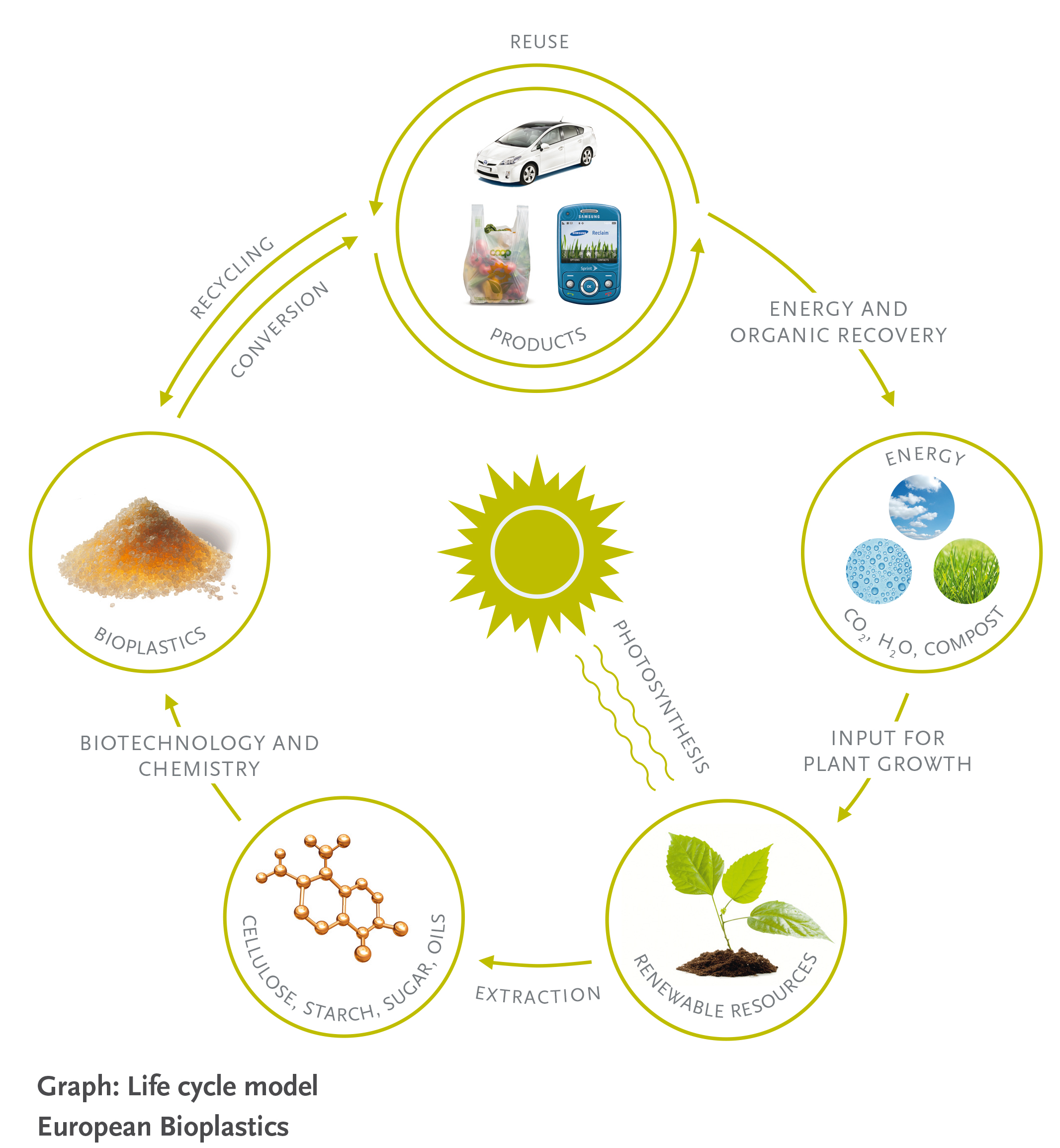The recent report by the World Economic Forum and Ellen MacArthur Foundation on ‘The New Plastics Economy: Rethinking the future of plastics’ provides an overarching vision of a global circular plastics economy in which bioplastics play an essential role in decoupling the economy from fossil resources and help to return nutrients to the soil. European Bioplastics welcomes the report and its vision, which aligns with the principles of the circular economy and outlines concrete steps on how plastics never become waste but, instead, re-enter the economy as valuable technical or biological nutrients.
“The report demonstrates very clearly how bioplastics can help to deliver better economic and environmental outcomes by replacing fossil with bio-based feedstock, while developing the many benefits of plastic packaging”, says Hasso von Pogrell, Managing Director of EUBP. The report acknowledges that ‘feedstock from renewable sources helps decouple plastics production from finite fossil feedstock and reduce the greenhouse gas footprint of plastic packaging […] and potentially act as a carbon sink throughout their life cycle.’
European Bioplastics defined 10+1 benefits of bio-based plastics for the future circular plastics economy:
- Bio-based plastics are an innovative industry with a dynamic growth rate and an immense environmental, social and economic potential.
- Bio-based plastics can contribute towards EU 2020 emissions reduction targets.
- Bio-based plastics have the unique advantage to reduce Europe’s dependency on limited fossil resources.
- Bio-based plastics enable the transition from a linear to a circular economy in Europe.
- Bio-based plastics are made from a wide range of different types of bio-based feedstock.
- Sustainable sourcing of renewable feedstock and good agricultural practices are one of the key success factors of bio-based plastics.
- Bio-based plastics are no competition for the production of food and feed.
- Bio-based plastics are suitable for all existing end-of-life options.
- Bio-based plastics offer new and improved properties and performance.
- Consumers demand bio-based plastics.
+ 1) Coherent and reliable standards and labels are available to easily identify bio-based plastics.
Currently, bioplastics represent about one per cent of the about 300 million tonnes of plastic produced annually. But as demand is rising and with more sophisticated materials, applications, and products emerging, the market is already growing by about 20 to 100 per cent per year. According to the latest market data compiled by European Bioplastics, global production capacity of bioplastics is predicted to quadruple in the medium term – from around 1.7 million tons in 2014 to approximately 7.8 million tonnes in 2019.
The market data does not only demonstrate the contributions of the industry on moving towards a sustainable future with a reduced environmental impact. The forecast also predicts the budding bioplastics industry to unfold an immense economic potential over the coming decades. With the right legislative framework in place, production capacities of bioplastics within the EU could grow to up to 5.7 million tonnes per year by 2025 – 10 percent of the European plastics production, which translates to up to 160,000 high skilled jobs that could be created in the European bioplastics sector. “In order for our industry to unfold its full economic, social, and environmental potential in Europe, the current Circular Economy Proposal needs to better acknowledge the advantages of bio-based materials and make a stronger link between the bioeconomy and the circular economy”, concludes Pogrell.

